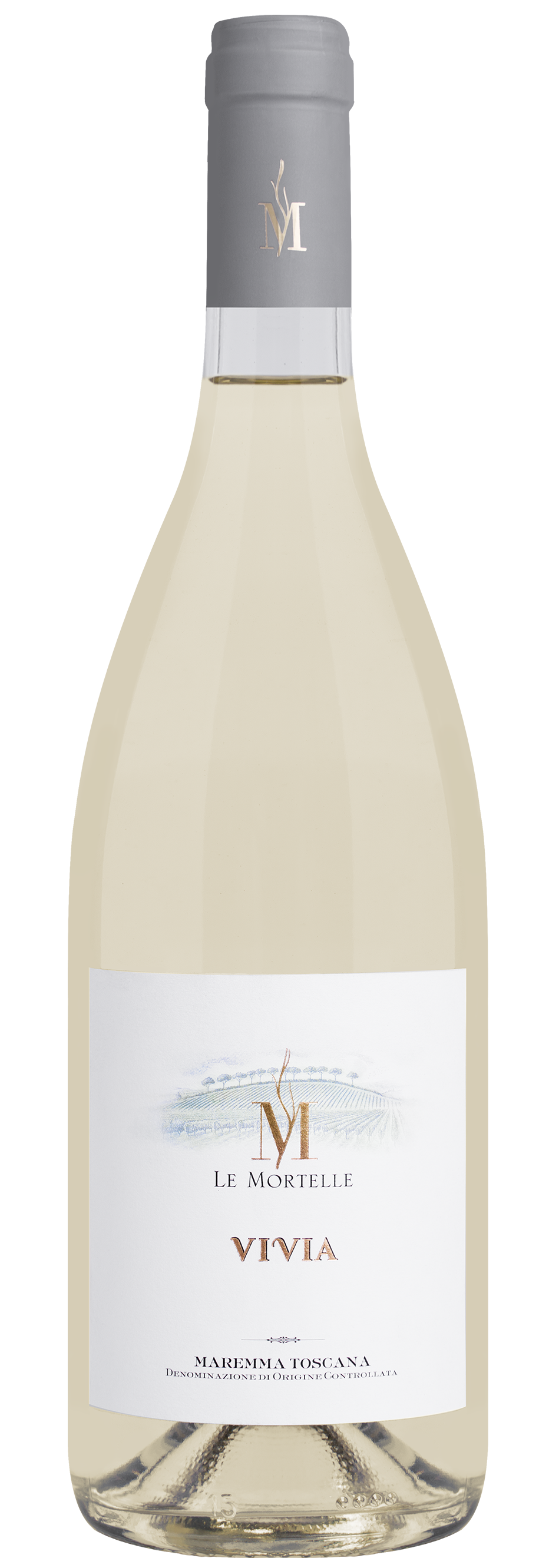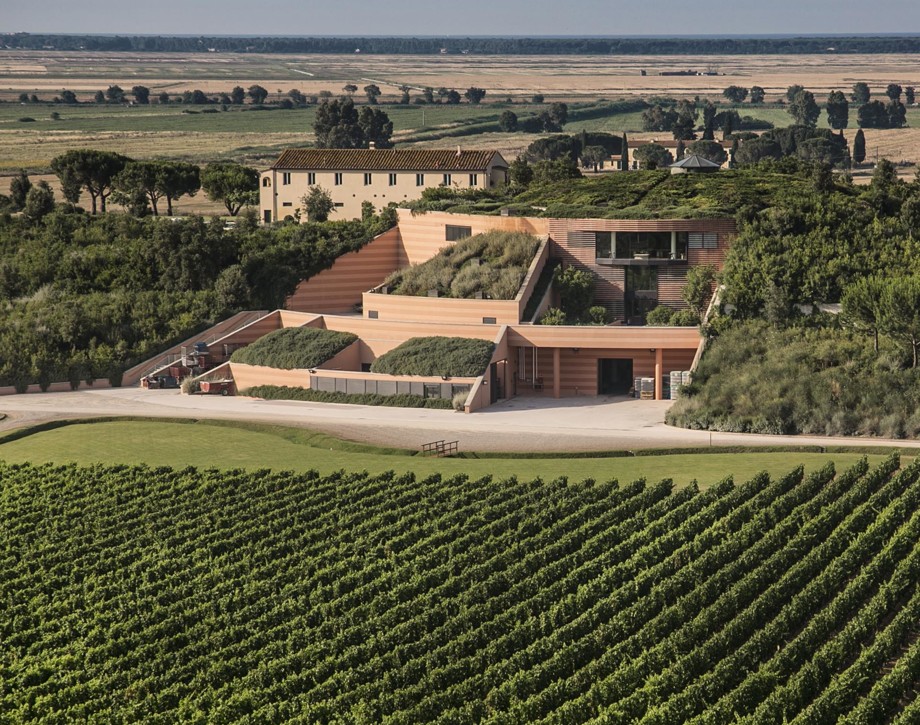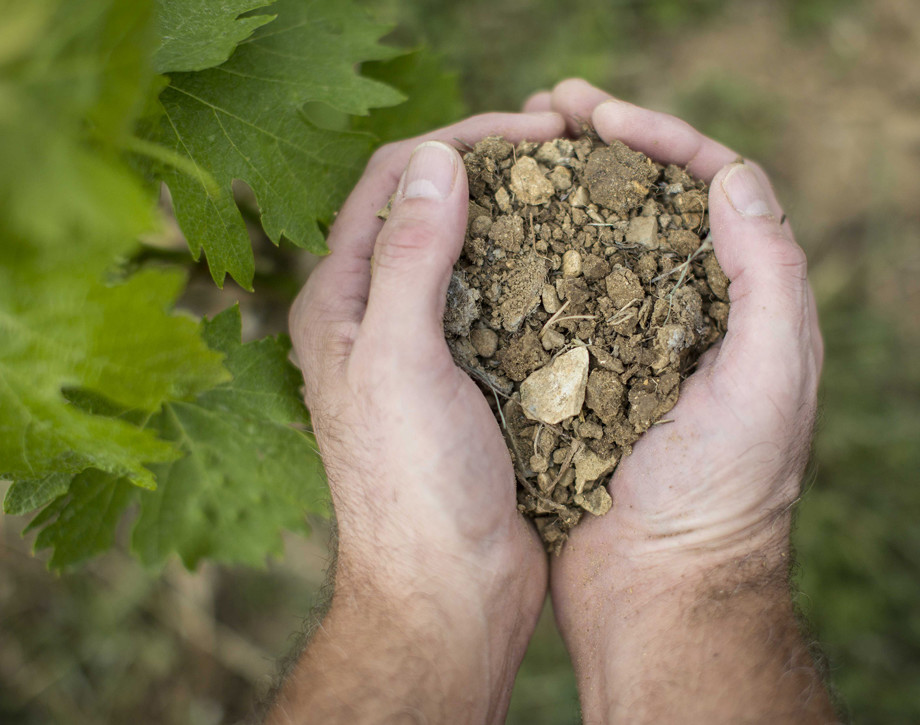Vivia

Climate
The 2015 vintage was characterized by a winter with abundant precipitation which assisted in creating important reserves of rainwater in the ground; a mild spring was followed by a warm and dry summer with temperatures above seasonal averages. Rains and a lowering of temperatures during the second half of August re-created optimal conditions for the vines. There were no problems of healthy development, and the vineyard continued to ripen the grapes in an excellent fashion, accumulating the typical aromatic substances of the different grapes varieties.
Vinification
The varieties were fermented separately, and a small percentage of Viognier and Ansonica were harvested late in order to give the wine notes of warmth and ripeness. The grapes, at the moment of their arrival in the cellars, were given a soft pressing and the must chilled to a constant temperature of 50° Fahrenheit (10° centigrade) for 24 hours in order to favor a natural static settling of the impurities. The clean must went into stainless steel fermenting tanks, where it fermented at a temperature of 61° Fahrenheit (16° centigrade). A brief three month aging period in stainless steel tanks on the fine lees preceded bottling.
Historical Data
The Mortelle estate is in the heart of Maremma in Tuscany, near the town of Castiglione della Pescaia set in an extraordinary and fascinating position both for the territory’s unparalleled natural beauty and its historical heritage and culture. The Antinori family has been part of this territory for generations. Evidence of ownership of land in this area is recorded on a property deed dated 1863. It states their ownership of Poggio Franco, one of the best vineyards on the estate, together with other parcels of land. Since 1999, when the property was acquired, the family has dedicated their efforts to improving the vineyards and building the new winery with the firm belief that this area, slowly emerging on the Italian viticultural horizon, has great potential for the production of high quality wines. Varieties grown in this area can fully express their own characteristics as well as the exceptional qualities of the terroir. The soil is of medium consistency, sandy and loamy composed of clay and silica and in some parts of the estate is rich in rocky deposits. Vermentino and Ansonica, typical grape varieties cultivated in Tuscany’s costal area, grow alongside Viognier, a vine that has recently been planted after years of patient research to produce an elegant white wine expressing the colors and aromas of the Maremma coastline.
Tasting Notes
The wine is intensely fruity in character with notes of ripe pears which fuse both with those of citrus fruit and delicate hints of white flowers. The palate is creamy, vibrant, and savory with an aromatic finish which recalls Mediterranean herbs and lemons.

The Wine
This wine is harvested from vineyards indigenous to the Tuscan coast, a blend of Vermentino and Viognier and a small percentage of Ansonica: a successful result of patient research that produced an elegant white wine expressing the colors and aromas of the Maremma coastline.

Climate
The 2015 vintage was characterized by a winter with abundant precipitation which assisted in creating important reserves of rainwater in the ground; a mild spring was followed by a warm and dry summer with temperatures above seasonal averages. Rains and a lowering of temperatures during the second half of August re-created optimal conditions for the vines. There were no problems of healthy development, and the vineyard continued to ripen the grapes in an excellent fashion, accumulating the typical aromatic substances of the different grapes varieties.
Vinification
The varieties were fermented separately, and a small percentage of Viognier and Ansonica were harvested late in order to give the wine notes of warmth and ripeness. The grapes, at the moment of their arrival in the cellars, were given a soft pressing and the must chilled to a constant temperature of 50° Fahrenheit (10° centigrade) for 24 hours in order to favor a natural static settling of the impurities. The clean must went into stainless steel fermenting tanks, where it fermented at a temperature of 61° Fahrenheit (16° centigrade). A brief three month aging period in stainless steel tanks on the fine lees preceded bottling.
Historical Data
The Mortelle estate is in the heart of Maremma in Tuscany, near the town of Castiglione della Pescaia set in an extraordinary and fascinating position both for the territory’s unparalleled natural beauty and its historical heritage and culture. The Antinori family has been part of this territory for generations. Evidence of ownership of land in this area is recorded on a property deed dated 1863. It states their ownership of Poggio Franco, one of the best vineyards on the estate, together with other parcels of land. Since 1999, when the property was acquired, the family has dedicated their efforts to improving the vineyards and building the new winery with the firm belief that this area, slowly emerging on the Italian viticultural horizon, has great potential for the production of high quality wines. Varieties grown in this area can fully express their own characteristics as well as the exceptional qualities of the terroir. The soil is of medium consistency, sandy and loamy composed of clay and silica and in some parts of the estate is rich in rocky deposits. Vermentino and Ansonica, typical grape varieties cultivated in Tuscany’s costal area, grow alongside Viognier, a vine that has recently been planted after years of patient research to produce an elegant white wine expressing the colors and aromas of the Maremma coastline.
Tasting Notes
The wine is intensely fruity in character with notes of ripe pears which fuse both with those of citrus fruit and delicate hints of white flowers. The palate is creamy, vibrant, and savory with an aromatic finish which recalls Mediterranean herbs and lemons.

Fattoria Le Mortelle
The Mortelle estate is in the heart of Maremma in Tuscany, near the town of Castiglione della Pescaia set in an extraordinary and fascinating position both for the territory’s unparalleled natural beauty and its historical heritage and culture. The Antinori family has been part of this territory for generations. Evidence of ownership of land in this area is recorded on a property deed dated 1863. It states their ownership of Poggio Franco, one of the best vineyards on the estate, together with other parcels of land. Since 1999, when the property was acquired, the family has dedicated their efforts to improving the vineyards and building the new winery with the firm belief that this area, slowly emerging on the Italian viticultural horizon, has great potential for the production of high quality wines. Varieties grown in this area can fully express their own characteristics as well as the exceptional qualities of the terroir. The property extends over an area of 270 hectares (667 acres) 170 of which (420 acres) are planted with vineyards of Cabernet Sauvignon, Cabernet Franc and other more recently planted vineyards with white grape varieties such as Vermentino, Ansonica, Viognier and a small parcel of Carménère. The soil is of medium consistency, sandy and loamy composed of clay and silica and in some parts of the estate is rich in rocky deposits.

Soil
Loamy soil with sand and silt.
















